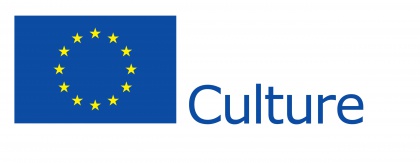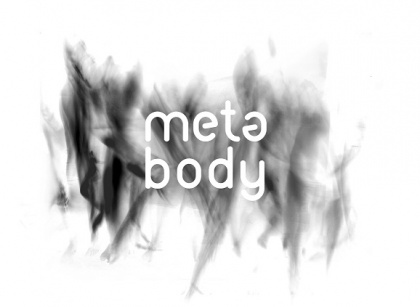Difference between revisions of "project01:Frontpage"
Gary Chang (Talk | contribs) |
|||
| (129 intermediate revisions by 7 users not shown) | |||
| Line 1: | Line 1: | ||
| + | == Robot environment for people== | ||
__NOTOC__ __NOTITLE__ | __NOTOC__ __NOTITLE__ | ||
| + | [[File:Cover Photo For Group 1.jpg|850px]] | ||
| + | <div style="height:30px; width: 850px; margin:0px; padding: 0px; padding-top: 20px; border: 0px;"> | ||
| + | <div style="float:left; width: 150px; height 30px; border: 1px solid #aaa; margin-right:15px; " align="center"> | ||
| + | [[project01:Frontpage |'''MAIN''']] | ||
| + | </div> | ||
| − | == | + | <div style="float:left; width: 150px; height 30px; border: 1px solid #aaa; margin-right:15px; " align="center"> |
| + | [[project01:PRESENTATION|'''PRESENTATION''']] | ||
| + | </div> | ||
| − | + | <div style="float:left; width: 150px; height 30px; border: 1px solid #aaa; margin-right:15px; " align="center"> | |
| − | + | [[project01:CONCEPT|'''CONCEPT/ why+how''']] | |
| + | </div> | ||
| − | == | + | <div style="float:left; width: 150px; height 30px; border: 1px solid #aaa; margin-right:15px; " align="center"> |
| + | [[project01:PROTORYPE|'''PROTOTYPE/ what''']] | ||
| + | </div> | ||
| − | + | <div style="float:left; width: 150px; height 30px; border: 1px solid #aaa; margin-right:15px; " align="center"> | |
| + | [[project01:CASE STUDIES|'''CASE STUDIES''']] | ||
| + | </div> | ||
| + | </div> | ||
| − | |||
| − | |||
| − | + | <div style="float:left; width: 850px;"> | |
| + | </div> | ||
| − | == | + | == '''ROBOZOO ''' == |
| − | |||
| − | |||
| − | |||
| − | + | ||
| − | + | == '''human<interaction>robot''' == | |
| − | + | ||
| + | RoboZoo aims at establishing the artificial environment of the interactive swarm of robots. Synergetic integrity with such a substance is the subject of our interest. Investigation of models of behaviours plays a paramount role in the presented concept. The possibility of shaping the environment by artificial creatures bring about the potential for dynamic system and its adaptability to the outer and inner changes. | ||
| + | |||
| + | Motion and visual expression of each independent robot evokes instantenous response in the environment. People perceiving remodelled swarm of artficial creatures are forced to reestablish themsleves in the space in real time. Borders are constituted mutually by robots and humans, as they are sending signals to respective sensors. Therefore they are both altering behaviours. | ||
| + | |||
| + | Mutual communications between both people and robots actuate the ceasless spatial reconfiguration. Robotic sensors are detecting every change in the ecosystem and trigger a constant loop of unexpected transformations. The balance between autonomy and control induces people to discover each independent principle. These essences trigger effortless processes of comprehension and immediate interaction. | ||
| + | |||
| + | <html> | ||
| + | <iframe src="//player.vimeo.com/video/99301681?loop=1" width="850" height="480" frameborder="0" webkitallowfullscreen mozallowfullscreen allowfullscreen></iframe> <p><a href="http://vimeo.com/99301681">RoboZoo goes REAL</a> | ||
| + | </html> | ||
| + | |||
| + | ---- | ||
| + | With the support of the Culture Programme of the EU.<br> | ||
| + | [[File:EU_flag.jpg|420px]][[File:META_logo.jpg|420px]] | ||
Latest revision as of 12:07, 23 March 2016
Robot environment for people
ROBOZOO
human<interaction>robot
RoboZoo aims at establishing the artificial environment of the interactive swarm of robots. Synergetic integrity with such a substance is the subject of our interest. Investigation of models of behaviours plays a paramount role in the presented concept. The possibility of shaping the environment by artificial creatures bring about the potential for dynamic system and its adaptability to the outer and inner changes.
Motion and visual expression of each independent robot evokes instantenous response in the environment. People perceiving remodelled swarm of artficial creatures are forced to reestablish themsleves in the space in real time. Borders are constituted mutually by robots and humans, as they are sending signals to respective sensors. Therefore they are both altering behaviours.
Mutual communications between both people and robots actuate the ceasless spatial reconfiguration. Robotic sensors are detecting every change in the ecosystem and trigger a constant loop of unexpected transformations. The balance between autonomy and control induces people to discover each independent principle. These essences trigger effortless processes of comprehension and immediate interaction.


